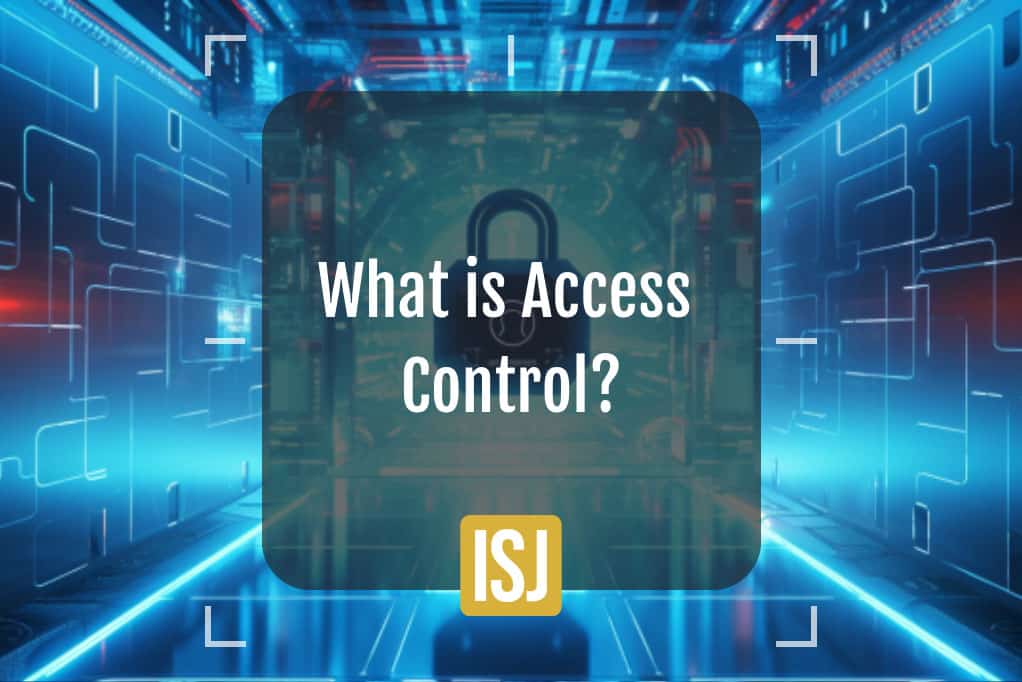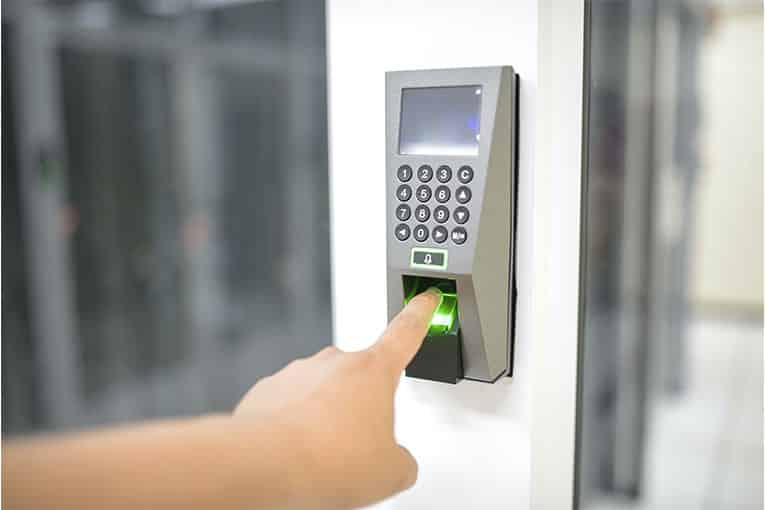What is Access Control?


Simon Burge
Share this content
Access control is an essential process in data security that enables organisations to effectively manage the authorised individuals who can access corporate data and resources.
Through the utilisation of robust access control policies, organisations can verify the identities of users and provide them with appropriate access levels.
Implementing access control is a crucial component in bolstering the security of web applications, guaranteeing that authorised users possess the necessary access levels to specific resources.
This process holds immense significance in assisting organisations in mitigating data breaches and countering various attack vectors, such as buffer overflow attacks, KRACK attacks, on-path attacks, and phishing attacks.
In this article, we cover the basics of access control; what it is, why it is important and what are the benefits and challenges of it.
Then, we’ll take a deeper dive into the different types of access control, the key components of access control, how it works in everyday life, and how you can implement access control.
Article Chapters
ToggleWhy is Access Control Important?
Access control is crucial for protecting sensitive information and preventing unauthorised access to both virtual and physical environments.
In a digital setting, access control is a vital component of the modern zero-trust security framework, which continuously verifies network access.
Without robust access control, organisations risk data leakage from both internal and external sources.
This is especially important for organisations in hybrid and multi-cloud environments, where access control provides enhanced security beyond single sign-on and safeguards against unauthorised entry from unmanaged devices.
In a physical setting, access control is important not only to protect your assets but also to help keep employees safe.
There are many benefits of implementing physical access control measures alongside digital ones; from tracking access use to implementing remote control access.
Key Components of Access Control
Access control is overseen through various components:
Authentication
The process of authentication establishes a user’s identity.
For instance, when a user enters their username and password to access their email or online banking account, their identity is authenticated.
However, authentication alone is insufficient for safeguarding organisational data.
Authorisation
Authorisation provides an additional layer of security to the authentication process.
It defines access rights and privileges to resources, determining whether a user should be granted access to data or allowed to perform specific transactions.
For example, an email service or online banking platform may require users to use two-factor authentication (2FA), which typically involves a combination of something they know (such as a password), something they possess (like a token), or something they are (such as biometric verification).
This information can be verified using a 2FA mobile app or a fingerprint scan on a smartphone.
Access
Once a user has successfully completed the authentication and authorisation steps, their identity is verified, granting them access to the desired resource.
Management
Organisations can manage their access control system by adding or removing authentication and authorisation for users and systems.
Managing these systems can become complex in modern IT environments that incorporate both cloud services and on-premises systems.
Audit
Through access control audits, organisations can enforce the principle of least privilege.
This involves gathering data on user activity and analysing it to identify potential access violations.
Types of Access Control
The primary models of access control encompass the following approaches:
Mandatory Access Control (MAC)
This security model involves the regulation of access rights by a central authority, employing multiple security levels.
Frequently utilised in government and military settings, resources and the operating system or security kernel are assigned classifications.
MAC permits or denies access to resource objects based on the information security clearance of users or devices.
An example of MAC implementation is Security-Enhanced Linux on the Linux platform.
Discretionary Access Control (DAC)
This access control method empowers owners or administrators of a protected system, data, or resource to establish policies determining authorised access.
Many DAC systems enable administrators to restrict the propagation of access rights.
However, a common criticism of DAC systems is the lack of centralised control.
Role-Based Access Control (RBAC)
Widely adopted, RBAC restricts access to computer resources based on defined business functions, such as executive level or engineer level 1, rather than individual user identities.
The role-based security model relies on a complex structure of role assignments, authorisations, and permissions developed through role engineering.
RBAC systems can be employed to enforce both MAC and DAC frameworks.
Rule-Based Access Control
In this security model, system administrators establish rules that govern access to resource objects.
These rules often consider conditions such as time of day or location.
Combining rule-based access control with RBAC is common to enforce access policies and procedures effectively.
Attribute-Based Access Control
This methodology manages access rights by evaluating a set of rules, policies, and relationships based on the attributes of users, systems, and environmental conditions.

Benefits of Access Control
Integrating an access control system offers numerous advantages for businesses:
Simplified Management
Access control systems streamline the management of employee credentials, entrance security, and tracking by providing centralised monitoring of all entryway activities from a remote location.
Comprehensive Activity Tracking
With an access control system in place, it becomes easier to monitor and record all activities, from employees to delivery drivers.
This enables the identification of individuals who have accessed the building or specific rooms during incidents like break-ins or theft.
Flexible Access Times
Modern access control systems allow for easy adjustment of access times for employees, visitors, or groups of people.
This enables remote management of access dates and times without compromising existing security protocols.
Specific Credential Requirements
Access control systems can enforce the use of specific credentials, such as badges, to ensure better control over who has access to different locations and spaces within the building or workplace.
Elimination of Traditional Keys
Transitioning to an access control system eliminates the hassle of creating, distributing, and managing traditional keys.
This reduces the risk of lost or copied keys, providing convenience and enhanced security.
Streamlined Entry & Exit
An access control system facilitates the efficient flow of people entering and exiting the building, saving time and allowing for better focus on core business activities.
It replaces labour-intensive manual tracking methods.
Improved Security & Risk Mitigation
Access control systems significantly enhance the security of business premises by accurately tracking and monitoring individuals’ access.
They provide detailed records of who accessed specific areas, assisting investigations in cases of security breaches, hacking attempts, theft, or break-ins.
By implementing an access control system, businesses can effectively monitor and manage employees, visitors, and overall security, ensuring peace of mind and robust protection for their premises.
Challenges of Access Control
Access control in modern IT environments faces challenges due to the distribution of assets.
These challenges include managing distributed IT environments, dealing with password fatigue, ensuring compliance visibility, centralising user directories, and addressing data governance and visibility.
Traditional access control strategies that worked well for fixed on-premises setups are not suitable for today’s dispersed IT systems.
As organisations adopt multiple cloud and hybrid solutions, assets are spread across different locations and devices, requiring dynamic approaches to access control.
Authentication and authorisation are often misunderstood.
Authentication verifies individuals’ identities using methods like biometric identification and multi-factor authentication.
Authorisation, on the other hand, involves granting appropriate data access based on authenticated identities.
Challenges with authorisation arise when individuals leave a job but still have access to company assets, creating security vulnerabilities if their unmonitored devices are compromised.
User experience is an often neglected aspect of access control.
Complex access management technologies can lead to misuse or circumvention, compromising security and compliance.
Cumbersome reporting and monitoring applications may result in inaccurate reporting, leaving important changes in permissions and security vulnerabilities unreported.
How Access Control Works in Everyday Life
Access control serves the purpose of authenticating users’ identities when attempting to access digital resources, as well as granting access to physical buildings and devices.
Below we break down examples of both physical and logical (or mechanical and digital) access control solutions:
Physical Access Control
Examples of physical access control methods include:
Train Turnstiles
Access control is employed at train turnstiles to permit only authorised individuals to use the train.
Users scan cards that instantly recognise and verify their identity and check if they have sufficient credit for the service.
Keycard or Badge Scanners in Corporate Offices
Organisations can safeguard their offices by utilising scanners that enforce mandatory access control.
Employees are required to scan their keycards or badges to verify their identity before accessing the building.
Logical/Information Access Control
Logical access control involves the use of tools and protocols to identify, authenticate, and authorise users in computer systems.
The access control system implements measures for securing data, processes, programs, and systems.
Examples include:
Password-based Laptop Authentication:
A commonly used method to prevent data loss is the use of passwords when signing into laptops.
By employing a password, users can keep their personal and corporate data secure in case their device is lost or stolen.
Smartphone Unlocking with Fingerprint Scan
Smartphones can be protected with access control measures that only allow the authorised user to unlock the device.
Biometric features, like thumbprint scans, provide an additional layer of security to prevent unauthorised access.
Remote Access to an Employer’s Internal Network using a VPN
Users can establish secure access to their employer’s internal network by using a Virtual Private Network (VPN).
This enables remote access while ensuring authorised users can securely connect to company resources.
Methods of Implementing Access Controls
There are various methods companies use to implement access control, each of them contributing to a larger and more comprehensive access control framework.
This ensures appropriate management and regulation of user access to resources.
Popular methods include:
VPN
A popular and accessible approach to implementing access controls is the use of a VPN (virtual private network).
This is because VPNs offer a secure way for users to access resources remotely, which is important for hybrid/remote operations.
Companies often leverage VPN’s to provide secure network access to their employees when located outside of the office environment.
This can be working from home or even working in different locations around the world.
But, while VPN’s can be great for security purposes, they do occasionally introduce performance issues, such as lagging and slow speed.
Password Management Tools
Passwords can be a big security risk.
While intended to protect data from external parties, attacker capabilities have evolved over time, rendering the humble password (almost) useless.
A password manager is an app that secures passwords and adds a level of simplicity to corporations with multiple employees who will have multiple passwords.
Password Management Tools have two main functions:
- Helping to create and securely store a password that is generated to be difficult to guess or remember.
- Ensuring ease of retrieval of these passwords as and when the user needs them.
As with any cyber security solution, there are risks to password management tools if used incorrectly.
While in theory, the use of such a tool could enable an attacker to access all of a company’s passwords in one place, when used and managed correctly, the security features of a good app should protect from this.
This is also less likely than an account becoming compromised due to an initial weak password.
Other methods used in access control frameworks include:
- Identity repositories
- Monitoring and reporting apps
- Provisioning tools
- Security and policy enforcement services
In Summary
Access control is crucial for managing authorised access to sensitive data and physical resources.
It enhances security and ensures safer access to web applications.
It provides benefits like simplified management, activity tracking, flexible access times, specific credential requirements, elimination of traditional keys, streamlined entry/exit, and improved security.
However, challenges exist in managing distributed IT environments, addressing password fatigue, ensuring compliance visibility, centralising directories, and addressing data governance.
Understanding different access control types is essential, as is being able to recognise which solutions are best for your business.
For example, choosing between mechanical and digital methods, or adding tools like VPNs and password managers to your strategy.
By understanding and implementing access control, organisations establish robust security, mitigate risks, and protect sensitive data.
Want to learn more about digital access control? Read our latest article about the advantages of cloud-based access control.



